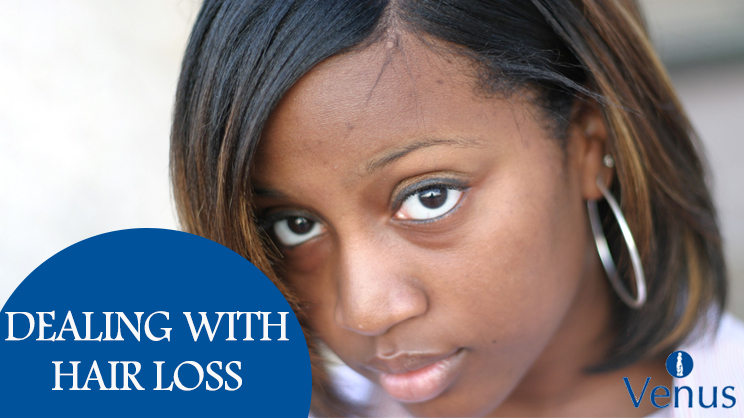Hair loss, also known as alopecia, refers to a loss of hair from part of the head or body. Hair loss can vary from a small area to the entire body. Everyone loses hair. Most people normally shed 50 to 100 hairs a day. This usually doesn’t cause noticeable thinning of scalp hair because new hair replaces the hair that has been shed. Hair loss occurs when this cycle of hair growth and shedding is disrupted or when the hair follicle is destroyed.
The exact cause of hair loss may not be fully understood, but it’s usually related to one or more of the following factors:
- Family history (heredity): This is the most common cause of alopecia. It affects both men and women and occurs gradually. It will often start with a receding hairline and bald spots for men and thinning hair in women.
- Hormonal changes: This can cause temporary hair loss. It may be due to pregnancy, child birth or onset of menopause. Thyroid problems may also cause alopecia.
- Medical conditions: Infections of the scalp such as ringworms can cause alopecia. This condition is reversed once the infection is treated.The body’s immune system can also attack the hair follicles causing sudden hair loss
- Medication: Certain drugs such as cancer drugs, arthritis and anti-depressants may cause hair loss.
- Hair-pulling disorder: This condition, also called trichotillomania, causes people to have an irresistible urge to pull out their hair, whether it’s from the scalp, the eyebrows or other areas of the body.
- A trigger event: Many people experience a general thinning of hair several months after a physical or emotional shock. This type of hair loss is temporary. Examples of trigger events include sudden or excessive weight loss, a high fever, surgery, or a death in the family.
- Certain hairstyles and treatments: Excessive hair styling or hairstyles that pull your hair tight, such as pigtails or cornrows, can cause traction alopecia. Hot oil hair treatments and permanents can cause inflammation of hair follicles that leads to hair loss. If scarring occurs, hair loss could be permanent.
Treatment for Hair Loss
Many women resort to finding a quick fix when they experience alopecia. The key to fixing the problem is first to identify the causes. Although there is permanent alopecia, majority of the cases can always be treated. Luckily, most causes of hair loss can be stopped or treated. Anyone troubled by hair loss should see a dermatologist. These doctors specialize in treating our skin, hair, and nails.
- Avoid hairstyles that are very tight
- Consult a specialist if you suspect the alopecia is due to an underlying condition. A hairdresser can help assess the extent of the hair loss. Treatment by a specialist may include drugs to reduce inflammation and suppress your immune system, such as prednisone. If a certain medication is causing the hair loss, your doctor may advise you to stop using it for at least three months.
- A transplant expert can perform surgery on severe cases of alopecia
- Wigs and hair pieces may be used to conceal the disorder
The goals of treatment are to promote hair growth, slow hair loss or hide hair loss.


Share This
Share this post with your friends!